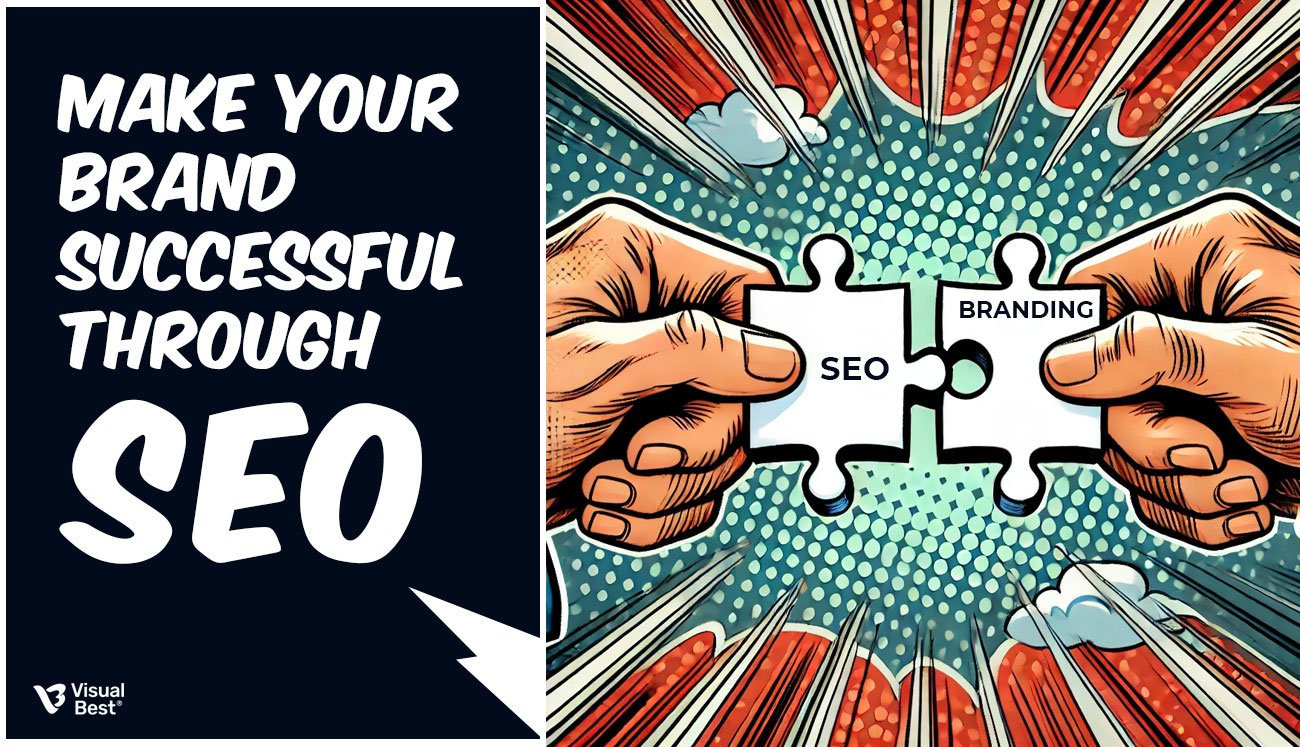Branding , Design
The Ultimate Guide to Rebranding: Give Your Brand a Fresh Start

With today’s changing market, brand image matters more than ever. According to Forbes, your business has just 7 seconds to make a first impression. Many brands lose potential customers by using an outdated logo, an unmemorable name, or a lack of clear vision and mission.
Rebranding can turn this around, creating a powerful uplift for your brand and strengthening relationships with your audience. This guide walks you through the core principles of a successful rebrand, offering valuable insights to help you shape a brand that makes an instant, lasting impact.
What is Rebranding?
Rebranding is all about giving your company a fresh start in the eyes of customers. It could mean updating your logo, changing your brand name, or giving your visuals a whole new style. But what’s the goal? To stand out from competitors and create a new identity that resonates with today’s audience. Think of it as reintroducing yourself in a way that feels current and meaningful.
It’s like remodelling an old house with new paint, new furniture, and new spaces within to renew it. However, rebranding is much more than a face-lift; it is recasting the experience that people have with your company. When a brand gets behind the curve or no longer reflects the direction the business is heading, it creates an opportunity to start anew, talk to a new audience, or place yourself differently in the market. This is a very powerful tool for growth, relevance, and connection.
Types of Rebranding

Merger Rebranding
The new single brand identity that comes from the merger of two companies is through merger rebranding, which combines the best that comes from both parties’ brands into a single look with a message that can always be consistent and represents the strength and experience of both companies, thus an easier way for customers to perceive the two as one.
Partial Rebranding
Partial rebranding is a lighter update that keeps the core of the brand intact while refreshing certain elements, like the logo, colour scheme, or tagline. This approach is ideal when a brand needs a modern touch without losing its established identity, ensuring it remains relevant while preserving its history.
Full Rebranding
A total rebranding involves changing the brand’s logo, name, visuals, messaging, and, in many cases, mission. This form of rebranding is typically used when a firm is making significant changes, such as entering new markets, targeting a different demographic, or discarding an obsolete image. It’s a new beginning that rebuilds the brand’s identity from the ground up.
What’s the Difference between Merger, Partial and Total Rebrand?
| Type of Rebrand | Description | Ideal For |
| Merger Rebranding | Combines elements of two brands to create a unified identity that represents both companies. | Companies merging together or forming partnerships that require a single, cohesive brand image. |
| Partial Rebranding | Refreshes select brand elements (like logo, colours, or tagline) while retaining the core identity. | Brands need a modern touch without losing established recognition or history. |
| Full Rebranding | Completely transforms the brand, including visuals, messaging, and sometimes even the brand name. | Companies undergoing major shifts, such as new markets, new audiences, or significant changes in direction. |
Why Should You Rebrand Your Brand?

1. Your Revenue Is Down
When revenue declines, it’s often a sign that the brand isn’t resonating with the market. Rebranding can give your business a fresh look, attract new customers, and reconnect with existing ones. A modernised brand image can breathe life into sales, communicate value more effectively, and make the business relevant in an evolving market.
2. Your Customers Aren’t Interested
Low customer engagement usually means the brand isn’t capturing attention or meeting customer expectations. Rebranding offers a chance to redefine what makes your business unique and communicate it in a way that excites customers. By revitalising the brand’s message, visuals, and values, you can create a stronger connection with your target audience.
3. You’re Being Overlooked
If your brand is getting lost in the crowd, it’s likely because competitors are offering more compelling branding or better visibility. Rebranding can help you reclaim attention, sharpen your brand’s focus, and differentiate yourself from the competition. With a more refined and unique brand identity, you can stand out and become a key player in the industry.
4. Negative Reputation Issues
Sometimes, brands face negative perceptions that linger and hurt the business. Rebranding can be an effective way to distance the company from past issues, redefine its values, and create a fresh start. By refreshing your image and message, rebranding helps you build a more positive and trustworthy reputation.
5. You’re Launching a Big Product
A major product launch presents an ideal opportunity to rebrand and reintroduce the company to the market. Rebranding around a new product can reinforce its importance and generate excitement, giving customers a clear reason to connect with the brand in a new way. This alignment can boost the product’s impact and contribute to brand growth.
6. You’re Not Standing Out
When your business blends in with competitors, customers have little reason to choose you over others. Rebranding can help identify and emphasise what makes your brand unique. By updating visuals, messaging, and positioning, you can create a memorable brand that attracts attention and builds loyalty in a crowded market.
7. You’re Facing a Merger or Acquisition
Mergers or acquisitions often bring together different identities, requiring a unified brand that reflects the new, combined entity. Rebranding can help create cohesion, combining the strengths of both brands while setting a clear direction for the future. This approach provides a fresh start and builds a unified image for customers and stakeholders.
8. You’ve Expanded Beyond Your Area
When a business grows beyond its initial geographic location, the brand may need to adapt to appeal to a broader audience. Rebranding can give a more universal appeal, adjusting the brand’s tone, visuals, and message to connect with a larger and more diverse market. This helps the business remain relevant as it expands.
9. You’re Reaching a New Audience
Shifting your focus to a new audience can require changes to the brand’s identity. Rebranding helps align with the values, tastes, and expectations of the new demographic. By adjusting the brand’s look and message, you can create a fresh appeal that resonates with this audience, building connections and trust from the start.
Some TOP Rebranding Strategies

1. Reaching Out to More People with Your Brand
Sometimes, a brand just needs a larger stage. Reaching and expanding might simply mean putting your brand out there in front of more people by looking into new social media paths, partnering with other brands, or entering into trending conversations.
It’s just about being where your audience already hangs out, making it easy for new people to discover and connect with you. Helping your brand become part of people’s everyday lives by coming up with fresh ways of reaching out.
2. Making Your Brand More Relevant
To continue being relevant, one needs to stay fresh. A brilliant rebrand can be an update of the visuals, a modern twist in the messaging, or even an integration of sustainable practices that are really important to the audience of today.
It’s about being relevant and showing people that your brand “gets it.” When you make your brand relevant, you are saying to your customers, “Hey, we are here, and we are tuned in to what matters to you.”.
3. Connecting with a New Audience
Want to tap into a completely new audience? Rebranding may provide you with an opportunity to break into a different world and let your brand speak in another tongue, giving your brand something unique for this new audience to latch onto: it might be a new style, new products, or even changing your tone of voice and bringing it in tune with their wavelength.
Reaching out to a new audience requires a different mode of presentation that makes them feel included, invited, and thrilled about what you are offering.
4. Paying Attention to What Customers Say
Your customers are your best critics, and they often have something of value to say about your company. Hearing their feedback through reviews, social media comments, or surveys-and taking the lesson in that direction will make the rebranding speak directly to their needs.
Perhaps they want better service, eco-friendly packaging, or more personalised communication. You can change things by tuning into what they are saying.
5. Improving Your Brand’s Image
Every brand goes through rough patches, and sometimes, a fresh look and feel can turn things around. If your brand’s image could use a boost, rebranding can help shift perceptions in a positive direction. It might mean refreshing your logo, refining your brand voice, or putting more focus on what you stand for.
This strategy is all about giving your brand a clean slate, building trust, and showing the world that you’re ready to put your best foot forward.
Fundamental Parts of a Rebranding Strategy
1. Logo Redesign
The logo is like the face of your brand. It’s one of those things you see first and remember the most. So, when you redesign it, you get your brand a new beginning, keep it modern, and help it be memorable. There must be something about the personality of your brand reflected in a new logo, so that people know what you are talking about the moment they set eyes on it.
It’s not just good looks; it helps you stand out, attract attention, and create a strong bond with your target audience. A new logo gives your brand a fresh life, fresh and exciting, and ready to grow at the pace of today’s market.
2. Website Redevelopment
Your website is the digital home of your brand—a place where customers learn about what you do. Updating it to match your new brand identity makes visiting your site a better experience. A redeveloped website is easy to navigate, visually appealing, and reflects your brand’s style.
This includes refreshing colours, fonts, and layouts and even adding interactive features. When your website feels welcoming and is easy to use, visitors are engaged. A well-designed, up-to-date website builds trust, showing visitors that your brand is professional, reliable, and aligned with modern standards.
3. Updated Brand Messaging
Brand messaging is all about how you talk about your brand, from the words you choose to the tone you use. Refreshing your messaging aligns it with the new brand identity, creating a clear and relatable voice. This helps customers understand what your brand represents and why it’s valuable to them.
Whether through social media, ads, or customer service, consistent messaging makes your brand feel authentic and trustworthy. Clear, updated messaging doesn’t just inform; it creates an emotional connection that draws people in and keeps them engaged with your brand.
4. Visual Identity Revamp
A brand’s visual identity goes beyond the logo. It includes colours, fonts, and design styles that all work together to create a unified look.
Rebuilding the visual identity refreshes how your brand is seen everywhere—from packaging to social media. A cohesive design makes your brand easily recognisable, helping it stand out and be memorable.
When the visuals match across all touchpoints, it builds trust, as people feel like they know your brand. Updating your visual identity adds excitement and shows that your brand is evolving and ready to connect with today’s audience.
5. Content Revamp
Content is the voice of your brand and includes what you say and how you say it. Refreshing content with a new brand identity keeps it all in line. This encompasses fresh website copy, blog posts, social media posts, and newsletters.
Well-written, consistent content is there to connect people with your message and show what’s different about your brand. Improvement in the quality of what is shared is but one of the advantages that a facelift brings to your rebranding.
The general explanation is that content draws people in and keeps them interested by telling your brand’s story in a way that feels new and engaging.
6. Social Media Refresh
Social media is where many people connect with brands, so updating it to reflect your rebrand is essential. A social media refresh includes new profile pictures, updated post styles, and reimagined content strategies. This makes your brand look consistent across all platforms, so followers instantly recognise and relate to the new identity.
Social media is also a great place to introduce your rebrand and engage with both new and loyal followers. When your social media reflects the refreshed brand, it creates a seamless experience and strengthens your brand’s connection with its audience.
7. Packaging Redesign
Packaging often would be the first thing noticed by anyone when buying a product. Redesigning your packaging to match rebranding will surely give you a fresh look compared to others on the shelves and online, with new colors, logos, and design elements that give your product a current feel.
A consist packaging design helps build trust and makes customers identify with your brand at a glance. Gorgeous and well-designed packaging also communicates to customers that you pay attention to details, but little things make big differences as far as how they feel about your brand. It is all just very small change that could really make a big difference.
8. Aligned Marketing and Advertising
Marketing and advertising ensure your message is getting to the right people. Update all those existing advertisements from digital to print to create consistency. Be it social media or e-mail, or advertising through paid messages; a universal message keeps cementing the new brand identity.
Aligned marketing and advertising have created a robust presence, and that way, people recognize and connect with you any place you go. This method creates a distinct and consistent experience so that it is easy for people to remember the brand and converse about it.
9. Employee Training and Brand Culture
Rebranding is not just about customers but also employees. Ensuring your team is trained on new brand values and styles will ensure that they understand and service well. Once employees begin to identify with the new brand, they become true brand ambassadors who can deliver a consistent experience for the customer.
Workshops, brand guides, and team meetings bring everybody up to par with the new rebranding. This gives the team confidence and helps them to work together like a well-oiled machine. An internal alignment can be of utmost importance for a success-oriented rebranding, ensuring that every individual clearly and passionately represents the brand.
10. Customer and Stakeholder Communication
Sharing the rebrand with customers and stakeholders is essential for a smooth transition. Clear communication helps everyone understand what’s changed and why, building excitement and trust. Use emails, social media, and even press releases to introduce the new brand, highlighting the benefits for customers.
By keeping audiences informed, you show that you value their involvement and support. This proactive approach makes them feel part of the journey, which strengthens their connection to the brand and fosters loyalty during the transition.
Do’s & Don’ts of Rebranding
Do’s of Rebranding
- Do Conduct a Brand Audit: Start by observing what’s presently working or not. Knowing the strengths and weaknesses of your brand gives you a base upon which you can change with, and allows you to hold onto parts of it that have value.
- Do Keep Your Target Audience in Mind: Rebranding should speak to your customers who matter the most. Use feedback from them, know what they want and ensure your brand’s new identity is perfectly meshed with beliefs.
- Do Set Clear Goals: Outline exactly what you want to achieve with your rebrand, whether it’s reaching a new audience, fixing a negative perception, or modernising your image. Clear goals help keep the rebranding process focused.
- Do Ensure Consistency Across All Channels: Make sure that every part of your brand, from logos to messaging, aligns across all platforms. This creates a unified experience that helps with recognition and trust.
- Do Involve Your Team: Keep your team in the loop from the start. Employees should understand the new brand direction and feel invested in it, as they’re key in communicating the brand’s values to customers.
- Do Test Before the Full Launch: Before going live, get feedback on the rebrand from a smaller group. This helps catch any issues and lets you adjust based on real responses.
- Do Communicate the Change: Inform your customers and stakeholders about the rebrand and why it’s happening. Explain what’s new and how it will benefit them, which helps avoid confusion and builds excitement.
Don’ts of Rebranding
- Don’t Ignore Brand Loyalty: If there are elements of your brand that your loyal customers love, don’t discard them lightly. Abrupt changes may alienate your existing audience, so keep familiar aspects where possible.
- Don’t Rush the Process: Rebranding takes time. Rushing through it can lead to inconsistencies, mistakes, and a lack of clear direction. Take the time to ensure every element is well thought out.
- Don’t Change Just for the Sake of Change: If your brand is still resonating with customers, don’t feel pressured to rebrand just to keep up with trends. Rebrand only if there’s a clear reason, like a new direction or audience.
- Don’t Forget About Your Competitors: Understand what your competitors are doing, but don’t try to copy them. Your rebrand should make you stand out in the industry, not blend in.
- Don’t Overcomplicate the New Identity: Avoid making your brand identity too complex with too many elements. Simplicity is key to creating a memorable and easily recognisable brand.
- Don’t Ignore Feedback: Customer and team feedback is crucial. Ignoring their input can result in a rebrand that doesn’t align with what your audience actually wants or needs.
- Don’t Skip the Research Phase: Skipping market research can lead to poor decisions. Understanding the market, your competitors, and your audience helps shape a rebrand that will succeed long term.
Successful Rebranding Examples

1. Airbnb
What It Was: Initially, Airbnb was a straightforward platform to book rooms from local hosts. Its logo was very simple, and most of its branding didn’t say much about the cause or the feeling it wanted to evoke.
What Changed: It unveiled the “Bélo” symbol, which stood for “belonging anywhere,” in an effort to rebrand Airbnb not just as a booking site but as a lifestyle-driven community brand.
Why It Worked: Through its rebranding, it tapped into the desire for connection and community from travelers. This new identity made the brand feel more meaningful, creating a loyal following and helping it stand out in a crowded hospitality market.
Feedback: The new identity was well-received, as it connected with people’s desire for meaningful travel experiences. The “Bélo” symbol became iconic, with users embracing it as a sign of community and belonging.
2. Dunkin’
What It Was: Dunkin’ was longtime known as “Dunkin’ Donuts” and sold mostly donuts with a variety of beverages.
What Changed: Dropping “Donuts” from its name, Dunkin’ will rebrand to focus on beverages and appeal to a younger, coffee-loving crowd. Stores also have to undergo renovations and marketing strategies based on brewing coffee.
Why It Worked: This shift modernised Dunkin’s image, aligning it more closely with coffee culture, a booming market segment. It allowed the brand to stay competitive with larger coffee brands while maintaining its loyal customer base.
Feedback: The rebrand resonated with younger audiences, especially coffee enthusiasts. Customers appreciated the updated, coffee-focused brand identity and the name change didn’t alienate longtime Dunkin’ fans.
3. Instagram
What It Was: Instagram started as a fun, photo-sharing app with a vintage-inspired logo that attracted photography enthusiasts.
What Changed: Instagram updated its logo to a sleek, minimalist design and rebranded it as a major social media platform for all types of visual content.
Why It Worked: The rebrand captured Instagram’s growth and shift toward a broader, more diverse audience. The modernised logo and platform focus made it a social media powerhouse, appealing to both creators and casual users worldwide.
Feedback: While there was an initial surprise at the logo change, users quickly embraced the new look. The sleek design became symbolic of Instagram’s modern, trendy image and helped the platform attract a wider audience.
4. Nike
What It Was: Nike has always been a sportswear brand, symbolised by its iconic swoosh, but it needed to keep its messaging fresh to stay relevant.
What Changed: Over the years, Nike has consistently refreshed its messaging with campaigns that empower and inspire. The swoosh has remained the same, but the brand’s emphasis on motivation and resilience keeps it in sync with the evolving athletic culture.
Why It Worked: By maintaining the core logo but continuously updating its message, Nike has kept a powerful, inspirational image. This approach keeps the brand connected with generations of athletes and fans who view Nike as a symbol of strength and perseverance.
Feedback: Customers responded positively to Nike’s empowering campaigns, reinforcing their loyalty. The brand’s ability to evolve its message while preserving core elements of its identity contributed to its iconic status.
5. Pepsi
What It Was: Pepsi’s original branding was classic but became less relatable as consumer tastes evolved over time.
What Changed: Pepsi has rebranded multiple times, with updates to its logo, packaging, and advertising style to stay aligned with cultural trends.
Why It Worked: Each rebrand helped Pepsi adapt to new generations, staying relevant without losing its identity. The rebrands allowed Pepsi to balance being modern and engaging while retaining the brand loyalty it built over decades.
Feedback: The updates were generally well-received, as they kept Pepsi relevant in a competitive market. Pepsi’s branding changes reinforced its image as a fun, youthful brand without straying from its roots.
6. Microsoft
What It Was: Microsoft was initially known for software like Windows but faced a dated brand perception as technology evolved.
What Changed: It brought a new logo and rebranded itself to reflect a modern, cloud-focused technology company, highlighting innovation in software, cloud services, and artificial intelligence.
Why It Worked: This rebrand successfully positioned Microsoft as a forward-thinking company, making it more appealing to a tech-savvy audience. It reshaped Microsoft’s image from a traditional software provider to a leader in digital transformation.
Feedback: The rebrand was well-received, as it revitalised Microsoft’s image and positioned it as a modern tech powerhouse. Customers appreciated the new focus on innovation, and the brand saw renewed interest and loyalty.
Disaster Rebranding Example

1 Gap
What It Was: Gap had a well-recognized logo with a blue box and a serif font, associated with a classic American style.
What Changed: In 2010, Gap introduced a new logo with a modern sans-serif font and a small blue gradient box above the “p”.
What Failed: The change was abrupt, and customers felt alienated. The logo didn’t reflect the brand’s identity or resonate with its loyal customer base.
Feedback: The backlash was immediate and intense. Fans took to social media to criticise the redesign, prompting Gap to revert to the original logo within a week. This failed rebrand cost Gap both money and credibility.
2. Tropicana
What It Was: Tropicana’s packaging was instantly recognisable on supermarket shelves-think orange with a straw jutting out of the top.
What’s Changed: Tropicana revealed new packaging last year, which made the brand look more austere. Gone are the oranges, and in their place is a stark glass of orange juice along with a generic sans-serif font.
What Failed: Consumers hated the new packaging, and it went unnoticed within the shelves in just weeks, thereby causing a 20% loss in sales.
Feedback: Having lost sales after the public outcry from the customers, Tropicana reverted back to its old design. The reason is because they think that the traditional design is also a part of the brand image.
3. Xfinity (formerly Comcast)
What It Was: Comcast had a very bad reputation for customer service, where many thought the company were a bunch of profit-grabbers who didn’t care about satisfying customers’ needs.
What Occurred: In 2010, they rebranded its cable and internet offerings as “Xfinity,” hoping to get the negative image out of consumers’ minds but did little in changing its offerings.
What Went Wrong: Customers realised within no time that Xfinity was just the old Comcast with a new face. The rebrand did nothing to address the problems at the heart, and frustration and disdain took their courses.
Feedback: The rebranding would be perceived as shallow with customers feeling duped. Without improvement in service quality, the rebranding was to little avail in terms of winning public opinion.
4. Yahoo
What It Was: Yahoo was one of the internet’s original giants, known for its colourful, playful logo and as a go-to for search, email, and news.
What Changed: They introduced a new logo in 2013 as part of an effort to modernise, but it failed to capture the fun, quirky essence that had drawn users to the brand.
What Failed: The new logo felt uninspired and generic. Coupled with years of leadership and direction changes, the rebrand couldn’t revive Yahoo’s declining relevance in the tech industry.
Feedback: The rebrand lacked a clear direction or message, and Yahoo continued to struggle as a company. The failed rebrand highlighted deeper issues with Yahoo’s identity and vision, ultimately leading to a sale to Verizon.
Let’s Refresh Your Brand with Visual Best
Your brand needs a new beginning, and that is exactly what we are here to do. At Visual Best, we recognise every brand is different; therefore, we start by coming up with a personalised rebranding plan for the same reason that we assist with a new logo, devise an entirely different look and feel for your website, or design a new look altogether. With numerous years of experience, we help you stand out among your competitors as a brand. Ready to see your brand shine? Let us show you how we can bring your vision to life.

 +1 445-266-1603
+1 445-266-1603 +91 96504 08093
+91 96504 08093














